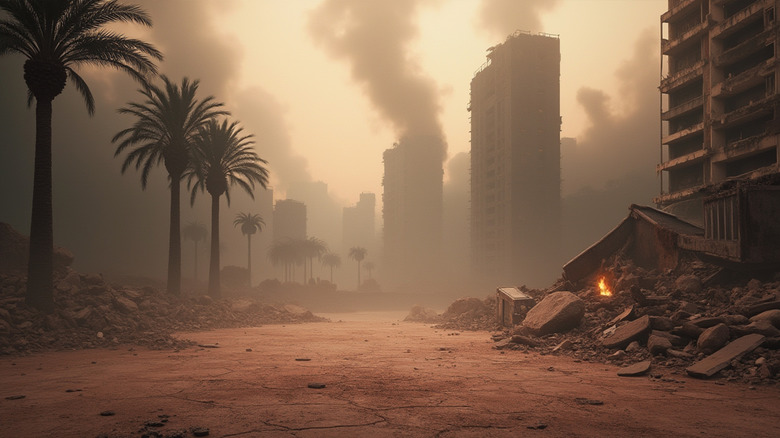Is There A Sixth Mass Extinction Event On Earth? Here's What Scientists Have To Say
A mass extinction event is a term used to describe a large-scale event that wipes out species. It is usually not a short, one-time incident but rather something that occurs over thousands or millions of years. Our planet has had five mass extinction events in its history, and scientists worry we are experiencing a sixth.
The most recent event was the End Cretaceous that killed the dinosaurs 65 million years ago, resulting in a 76% species loss. The asteroid impact is famous for killing the dinosaurs, though the actual extinction is more complicated and driven by multiple factors. Prior to that was the End Triassic caused by underwater volcanic activity, resulting in an 80% species loss. Then there was the End Permian, when Siberian volcanic activity caused global warming, and the Late Devonian, where rapid plant growth affected the climate. The earliest was the End Ordovician, 444 million years ago, caused by sea level and tectonic changes.
The sixth mass extinction event will be caused by human activity. Our impact on the planet has led to climate change and ecosystem destruction. Right now the outlook is bleak, but actions are being taken to try to save our future.
What is the sixth mass extinction event?
Human activity is bringing about the sixth event. Our resources are being depleted through deforestation, high water and energy usage, and mass consumption. Our destruction of natural habitats unbalances the environment for plants and animals in a domino effect. Our contribution to climate change worsens storms, causes flooding, increases air pollution, and alters the very way our planet functions.
According to the World Wildlife Foundation, we are losing species at an incredible rate that threatens the future of human life. Species are going extinct at a minimum of 1,000 times higher than the rate they would if humans did not exist, and sometimes up to 10,000 times higher. Humans themselves nearly went extinct a million years ago, and this data does not bode well for our species.
Research by teams at Stanford University and the National Autonomous University of Mexico was published in the Proceedings of the National Academy of Sciences of the United States of America, also known as PNAS, journal. It concluded that humans are rapidly wiping out not just individual species, but entire branches of life, meaning groups of closely related animals that play key roles in ecosystems. The paper refers to this as biological annihilation. Senior researcher Gerardo Ceballos stated to StanfordReport, " ... what we're doing to the tree of life will cause a lot of suffering for humanity."
How do we stop this mass extinction event?
To save the future not only for animals but also for the human population, immediate action has to be taken. Human influence on climate change must be controlled before further damage is done. Land and water must be set aside for conservation instead of consumption to balance the natural ecosystem. The good news is that there are ongoing missions to do just this.
The international treaty known as the Paris Agreement is focused on keeping global temperatures below a certain level through actions to reduce emissions. The Kunming-Montreal Global Biodiversity Framework has been adopted by nearly 200 countries and is focused on conserving land and water and restoring damaged ecosystems.
Unfortunately, there is still a lot of resistance to the changes needed. Professor Paul Ehrlich of Stanford University had this observation for the StanfordReport: "The size and growth of the human population, the increasing scale of its consumption, and the fact that the consumption is very inequitable are all major parts of the problem." He went on to say, "The idea that you can continue those things and save biodiversity is insane," and that, "It's like sitting on a limb and sawing it off at the same time."


